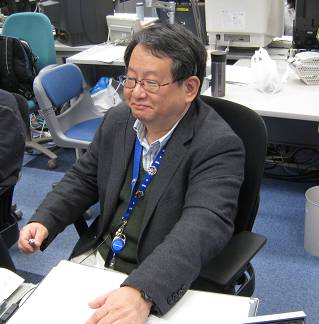This is an archive of information released in the past.
Disclaimer: It may contain broken links or outdated information. Some parts may not function in current web browsers.
*Visit https://humans-in-space.jaxa.jp/en/ for the latest information.

Experiment
- News
- Kibo Utilization Strategy
- Kibo Utilization Plan
- List of JAXA's Utilization Themes
- Experiment Facilities
- Space Environment Utilization
- Archive
Myo Lab Experiment Begins
* All times are Japan Standard Time (JST)
Cbl-Mediated Protein Ubiquitination Downregulates the Response of Skeletal Muscle Cells to Growth Factors in Space (Myo Lab)*, which uses the Cell Biology Experiment Facility (CBEF) in Kibo, began.
Principal Investigator (PI): Takeshi Nikawa, Professor of University of Tokushima
Samples for the experiment were launched to the ISS aboard the space shuttle Discovery (STS-131 Mission) on April 5, 2010. At 7:14 p.m. on April 10, the experiment began on board Kibo with commands sent from JAXA's Tsukuba Space Center (TKSC).
It is known that muscles atrophy in space over time. This is because the gravitational load, which a body experiences on the ground, is almost absent in space. Professor Nikawa found that an enzyme, called Cbl-b, plays a key role in the muscle atrophy in space based on his study on the data of the previous life science researches performed aboard the space shuttle. The Myo Lab experiment tries to determine the mechanism of muscle atrophy in space, focusing on the Cbl-b enzyme.
Aboard Kibo, rat cells will be cultured at 37 degrees Celsius in both the microgravity compartment and the 1G compartment of the CBEF. On Day10, a substance that stimulates muscle growth (growth factor) will be added to both groups. After fixative solution is added to both groups, samples will be collected from the both groups and will be frozen to bring back to the ground.
After the samples are returned to the ground, the team will examine genes and proteins in the samples to identify proteins targeted by Cbl-b. This experiment may clarify roles of Cbl-b in muscle atrophy. The information can be used for medical applications on the ground, such as medical treatment for muscle atrophy in bedridden people (by aging and disease), as well as countermeasures for muscle atrophy in astronauts.
The experiment will continue until April 21, 2010. The samples will be returned to the ground aboard the space shuttle Atlantis (STS-132 mission).
Special Message from Principal Investigator (PI)
Thanks to the people who have assisted preparation of the experiment, we could make a good start. Through this experiment, we would like to demonstrate our team philosophy, "Knowledge Has No Limit".

Professor Nikawa monitoring the experiment
from the User Operations Area (UOA) at TKSC
*All times are Japan Standard Time (JST)
| Copyright 2007 Japan Aerospace Exploration Agency | Site Policy |